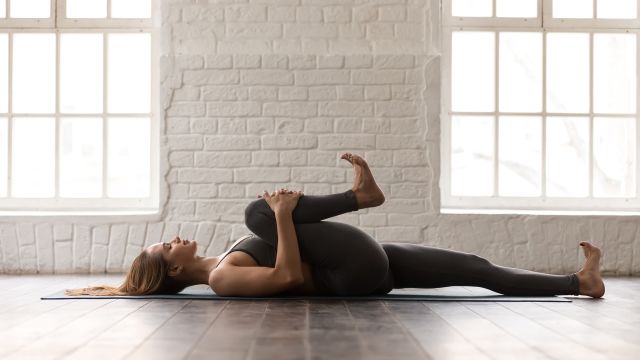Updated on October 31, 2024.
Aching, discomfort, pain, stiffness—you may be familiar with the symptoms of arthritis-related joint pain. In fact, about 54 million adults in the United States live with arthritis, according to the Centers of Disease Control and Prevention. And that number is only expected to rise as the population ages.
Arthritis, defined as the inflammation of one or more joints, is an umbrella term that generally describes various types of joint pain or disease. The most common type of arthritis is osteoarthritis, or the wear-and-tear arthritis. To relieve arthritis pain, it’s a wise idea for many people to adopt a fitness routine. Exercise is a proven, all-natural way to help ease joint discomfort.
“Motion is lotion,” says Steven Jackson, PhD, OCS, a physical therapist and administrator of outpatient therapy in Chicago. Movement can protect your joints because it helps your body produce the synovial fluid that lubricates them and keeps them moving smoothly. It also strengthens muscles around the joints, helping to support them.
Maintain your mobility and relieve joint pain symptoms with these low- or no-impact stretches for stiff joints. approved by a physical therapist.
Stretches for the neck and shoulders
If you’re looking for stretches to ease joint pain in your upper body, Jackson recommends these three static stretches, during which you hold your body in a challenging position and then release. Before you attempt these moves, do a 5- to 10-minute warmup consisting of light cardio, or dynamic or active stretching.
Corner stretch
For the first move, stand facing an empty corner in your home. Next, hold your arms up and out to the side, bent at the elbow in a 90-degree angle. Your upper arm should be parallel with the floor, and your forearm should be parallel to the wall.
Then, brace your forearms against the wall, keeping your back straight. Next, step chest-first into the corner, feeling the stretch across your shoulders and pectoral muscles. Hold for 30 seconds, performing three to five repetitions.
Seated shoulder stretch
This second move can be practiced at your desk. This move also stretches your upper body.
- Sit with your shoulders down and relaxed, and slowly begin to squeeze your shoulder blades together.
- Squeeze your shoulder blades together as if you’re holding something between them.
- Keep your shoulders down, squeeze gently, then release.
- Hold for five seconds, repeat for ten reps.
Chin-tuck stretch
For the final stretch, sit down, back straight and head balanced, looking forward. Gently tuck in your chin, not by tilting the head down, but by shifting your whole head and neck back to make a straight line with your spine. You may feel this stretch both in the back of your neck at the base of your skull, and in the front between your chin and collarbone.
Stretches for stiff hip joints
If you spend your days sitting, at a desk or on the road, you probably feel it in your hips. You can stretch hip flexors standing or lying down.
Standing stretch
For this first move, start by standing upright on one foot. Next, place the opposite knee up on a chair, explains Jackson. With your hands on your hips for stability, begin to shift your weight forward on the standing leg, slowly stretching the hip of the opposite side.
Towel stretch
If the standing stretch is too difficult, try this move: First, lie down on the edge of a bench, couch, or bed with one leg hanging off to the side. Bend the resting leg at the knee, foot flat on the bench to keep you steady. Hook a towel or yoga strap around your ankle on the hanging leg. Gently pull back as if you are trying to touch your foot to your glutes, bringing your knee down and stretching that same inner thigh area. Repeat until you feel loose and limber.
Safety steps to take
If you are a person living with arthritis-related joint pain and executing these stretches, make sure to take these precautions.
- Warm up before your stretch.
- Rest and don’t stretch if you are experiencing an arthritis flare.
- Monitor your comfort level.
These moves are challenging, so expect some discomfort. However, if you’re still sore two hours after practicing these moves, modify or relax your stretch routine.
Other joint-friendly workouts to try
Besides at-home stretches, there are other exercises for joint pain that can keep your joints lubricated and strong. Some low-impact workouts to try include:
If you’re having arthritis-related joint pain, you’ll probably want to avoid workouts like CrossFit or running. “When you hit the ground, it hits back, and this force gets absorbed through your joints,” Jackson says, referring to these types of high-impact activities.
Remember to always talk to your healthcare provider before starting a new workout routine, too. They can help you create an exercise or movement plan that’ll best suit your life and level of activity.







